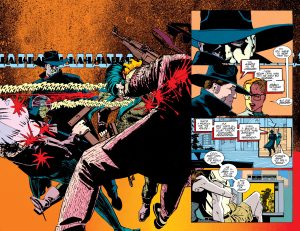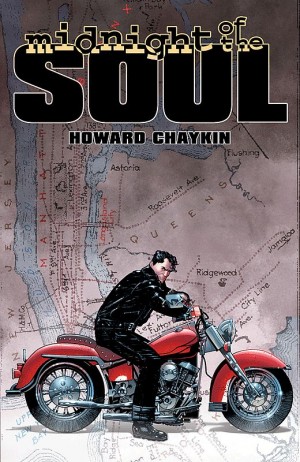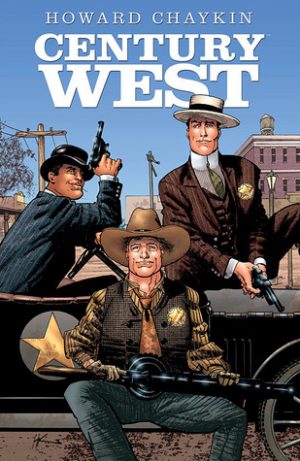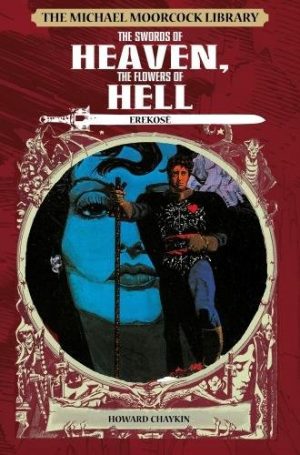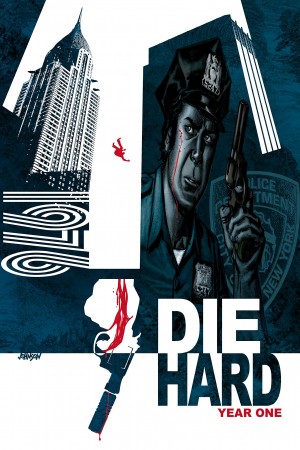Review by Karl Verhoven
Blood and Judgement proved very divisive when first published in 1986 as Howard Chaykin took the essence of the violent vigilante dispensing retribution from the original 1930s pulp novels and transferred him to the 1980s.
So where’s the Shadow been since he disappeared in 1949? Chaykin has a surprising answer for that, incorporates the Shadow’s origin, and moves events at a cracking pace. He even features the Shadow’s 1940s crew of assistants, now all elderly, but in a largely respectful fashion. That, perhaps doesn’t apply to Lorelei, trapped in an iron lung, tended to by monkeys and financing her condition via operating a sex chatline. It’s such touches that antagonised the Shadow’s fans, perhaps unable to see the wood for the trees. Chaykin’s presentation of the Shadow himself is a largely faithful representation of what the Shadow was. His is an appalling moral code making no allowance for mitigating factors applied to criminal acts, and Chaykin’s visual presentation of those crimes certainly gives the impression of people beyond redemption. “From what Harry’s told me you’re responsible for a thousand murders”, the Shadow is told. “Executions… in the name of just-”, he replies, being cut off with “Cut me some slack, pal. Who died and left you in charge?” The combative nature of this relationship defines the 1980s era by removing the reverential out-dated servitude of his original assistants.
Chaykin applied the same sophisticated storytelling approach he’d taken with his innovative American Flagg! series. There’s the cross-cutting dialogue, the TV commentary, incorporating Ken Bruzenak’s invasive sound effect lettering for atmosphere, and initially puzzling by presenting a series of one and two page vignettes about apparently unconnected people. According to your own views you’ll either consider he has a healthy attitude to sex, or is guilty of objectification. A new character, FBI agent Mavis Lockhart, partially addresses the latter in passing.
The art is spectacular. Chaykin may have set his story in the 1980s, but he ensures there’s enough space to satisfy his liking for the styles and vehicles of the past, and he emphasises personalities not only via clothing but by posture. In an interview at the back of the book Chaykin mentions how he found the supporting cast more interesting than the Shadow, and they’re all respectfully rendered, with little laughing at the elderly. Harry Vincent is at times a bumbling James Stewart, and at others John Wayne, but he’s the only one sometimes undignified, and then solely for plot purposes. Also concerning the art, the original colouring left something to be desired, especially with regard to skin tones, and that’s now been rectified.
Late in the book the villain of the piece says “You wanted sex and death. You got sex and death.” So do we, and wrapped into that is an imaginative tongue in cheek plot. It’s a lot of fun. Almost thirty years later Chaykin returned to the Shadow with Midnight in Moscow.

